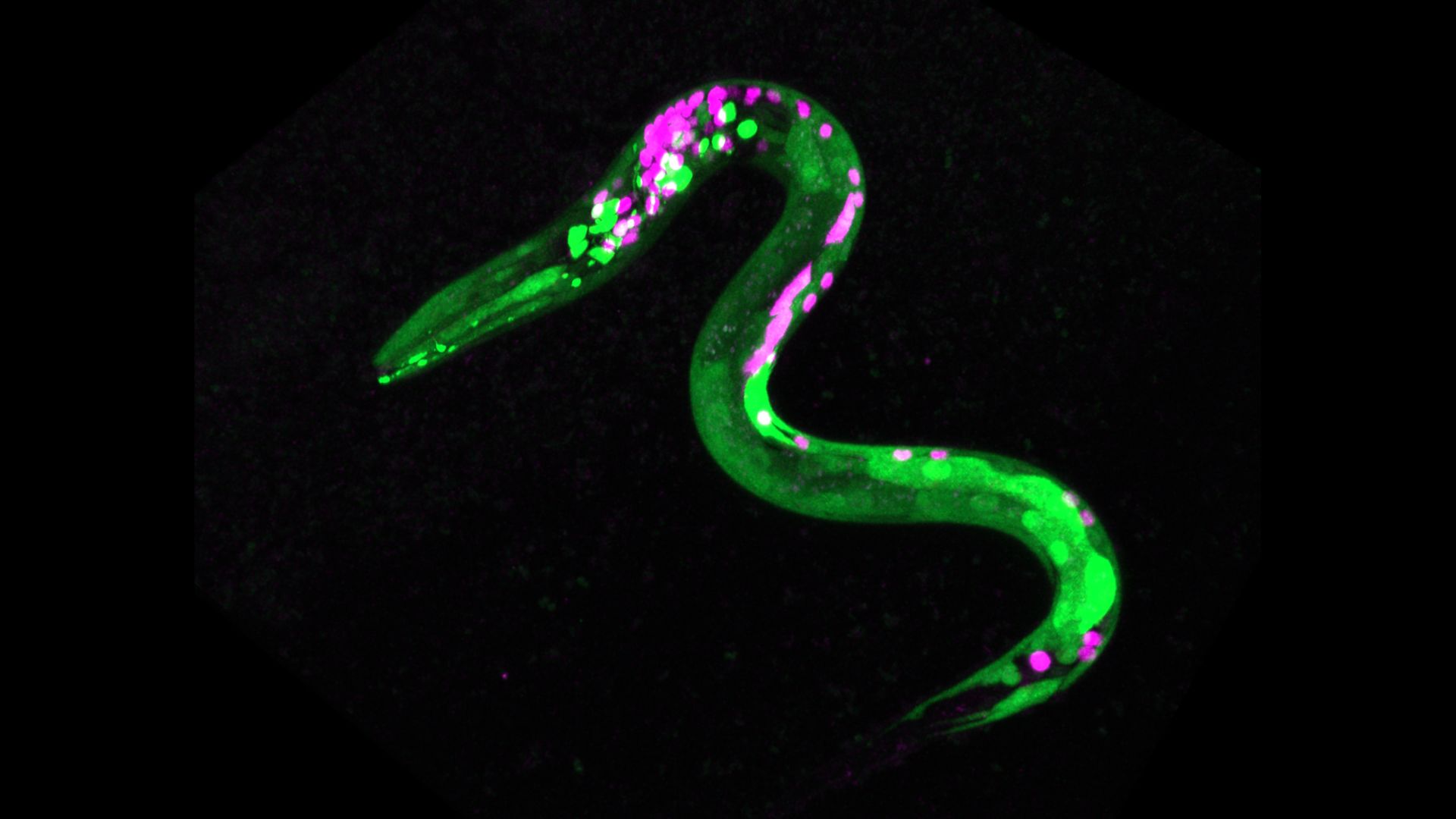
Just like humans, roundworms may also crave their favorite snacks after getting high on weed, scientists recently discovered. The researchers didn't test the worm's reactions to cannabis itself, but to a compound that activates the same receptors in the brain.
"The nematodes not only get the munchies, but they get them through the same process as mammals," Shawn Lockery, a professor of biology at University of Oregon, told Live Science. "The effects of cannabinoids in nematodes parallel the effects of marijuana on human appetites."
One of the most well-known effects of smoking or consuming marijuana is an intense increase in appetite, known as "the munchies." Marijuana, or the dried flowers, leaves, stems and seeds of the plant Cannabis sativa, contains a class of chemicals called cannabinoids. These cannabinoids include the main compound behind weed's psychoactive effects, delta-9-tetrahydrocannabinol (THC), and they bind to cannabinoid receptors (CB) in the brain. In this way, these plant-made molecules mimic the action of molecules made by the human body, called endocannabinoids.
Endocannabinoids are known to regulate appetite and food intake, and in general, past studies have shown a strong link between CB receptor activation and hunger in humans and mammals. This activation induces cravings for food rich in sugars and fats. For example, rats high on THC eagerly gobble up chocolate cake batter and drink copious amounts of sugar water, experiments have shown. However, the effects of cannabinoids on invertebrates, like nematodes, are poorly understood.
Related: How does cannabis get you high?
In a study published Thursday (April 20) in the journal Current Biology, Lockery and his colleagues treated a species of roundworm called Caenorhabditis elegans to an endocannabinoid and studied their response to food. The roundworm feeds on bacteria in decaying plant matter and produces some of the same endocannabinoids seen in mammals, including anandamide and 2-arachidonoylglycerol (2-AG).
The scientists exposed worms to high concentrations of anandamide for 20 minutes and then offered them five types of bacteria. These bacteria differed in terms of how quickly they cause nematodes to grow, once eaten. The team found that the worms, now soaked in anandamide, rapidly devoured the growth-promoting bacteria while barely picking at the others.
Next, the scientists placed the bacteria at different locations in a maze, into which they released the worms. Compared with their untreated peers, the anandamide-doped worms more often scrambled towards the arm that had growth-promoting bacteria and spent more time chowing down on the grub. These observations suggested that the endocannabinoid drove worms to not only prefer growth-promoting food, but also eat it quickly.
The researchers found that a specific worm cannabinoid receptor — NPR-19 — binds anandamide and seems to mediate this feeding frenzy. The team replaced the worm's gene for NPR-19 with the human gene for the CB1 receptor, the receptor that both anandamide and THC bind in people. They found that anandamide was still able to produce the munchies in the worm by binding to the human receptor.
"The nematode and human cannabinoid receptors are interchangeable," Lockery said. "This emphasizes the commonality of cannabinoid effects in nematodes and humans, even after 500 million years of evolution."
This shared experience of having the munchies not only connects nematodes and humans over evolutionary time, but also suggests that the endocannabinoid system likely serves similar functions in many animal species, and that those functions are key to those species' survival. Among these key functions are those involved in controlling food intake and specifically "hedonic feeding," or cravings for tasty, calorie-dense foods.
At least in nematodes, anandamide may trigger the munchies by making a specific class of smell-detecting, or olfactory neurons more sensitive to favored food odors and less sensitive to non-favored food odors, the team found. These neurons don't carry the NPR-19 receptor, so other neurons with the receptor are likely "sending a message to the olfactory neurons," Lockery said. "The next step is discovering the nature of this signal and the neurons sending it."







